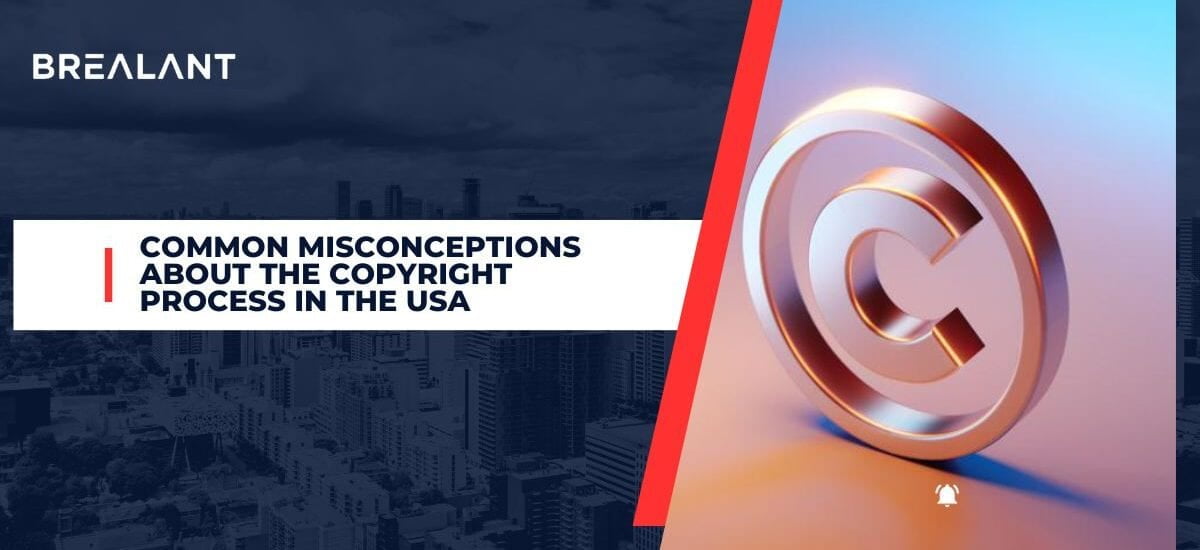
The copyright process in the USA can be confusing and seemingly contradictory. What are the most common misconceptions about the intellectual property right? In this article, we aim to dispel some of these myths and provide a better understanding of what happens when you file for copyright protection.
Copyright is a legal doctrine that protects the creator of intellectual property, such as literary, musical, and artistic works. In the United States, copyright protection is available to the original works of any artist in any other fixed-in, accessible (tangible) medium of expression. The law provides certain exclusive rights to the owner of copyrights, including the right to reproduce the work, distribute copies to others subject to certain conditions, and make modifications to the work.
The United States has different laws regarding the copyright process, which can be confusing for businesses. This article will discuss some of the most common misconceptions about the copyright process in the USA. We will also provide tips on how to prevent trademark infringement.
What are the common misconceptions about the copyright process in the USA?
- You may possess exclusive copyright authority over a certain topic, like a historical character, over which you have copyright: The unique expression of ideas is the only part of them that copyright law safeguards. A different story about the same monarch could be written by someone else without violating your copyright, even though your story about that king may be covered by copyright.
- Continuity of copyright: Copyright expires eventually. In most nations, copyright protection is in effect for the author’s lifetime plus a certain number of years. After that point, anybody can use the work without asking for permission or paying a fee because it has entered the public domain. For instance, copyright protection is valid in the UK and the US throughout the author’s lifetime plus an additional seventy years.
- When used for instructional reasons, copyrighted content is permissible: The use must alter the original work rather than substitute it. Their use must not negatively impact the market for original literary, musical, and artistic works. The usage must be transformative, not a replacement for the original work, and not hurt the original work’s market. There may also be particular restrictions and exclusions for educational use in some nations, such as the educational fair use exception in the United States.
- A general concept is protected by copyright: Though it does protect the expression of certain ideas, copyright law does not protect ideas in and of themselves. In other words, if you create a book about a group of friends taking a cross-country road trip, your particular embodiment of that idea is protected by copyright. However, if they did not imitate your exact expression or how you told your narrative, they may publish a book on a comparable road trip without violating your copyright.
- As long as credit is given, you may use any song or image: Copyright violation is still present even when attribution is given. To use someone else’s creation, you must first gain the author’s explicit authorization or secure a license from the copyright holder.
- Some copyrighted content can be used without authorization: Although there are no strict guidelines about how much is permitted, the concept of fair use permits the use of copyrighted material inadvertently in modest doses. The intent and character of the use, the nature of the copyrighted work, the quantity and quality of the portion used, and the impact on the potential market for the original work are all important considerations.
- For your work to be copyright protected, you must register it: While copyright protection is automatically applied to works of original composition, you must make sure you can demonstrate the date the work was produced. The ownership of registered works is publicly available in the USA, which is useful in the event of infringement. If you register, you can file a lawsuit for copyright infringement and pursue damages, such as legal costs and statutory damages.
Conclusion
Many people believe that copyright applies only to creative works such as literary, musical, and artistic works. However, copyright law also applies to different types of works, such as recipes or videos. Therefore, you must understand the difference between copyrightable and uncopyrightable work. Furthermore, you must note any permissions the author or publisher granted when using their copyrighted material.
If you want to protect your intellectual property, it is important to understand the US copyright process. By understanding these misconceptions, you can avoid legal problems and protect your business investments. If you still have ambiguous thoughts about the copyright process in the USA, get help from the experts of Brealant. The dedicated firm strives to provide its clients with tech-efficient IP solutions. Visit the official website and book a consultancy session with the experts today.

